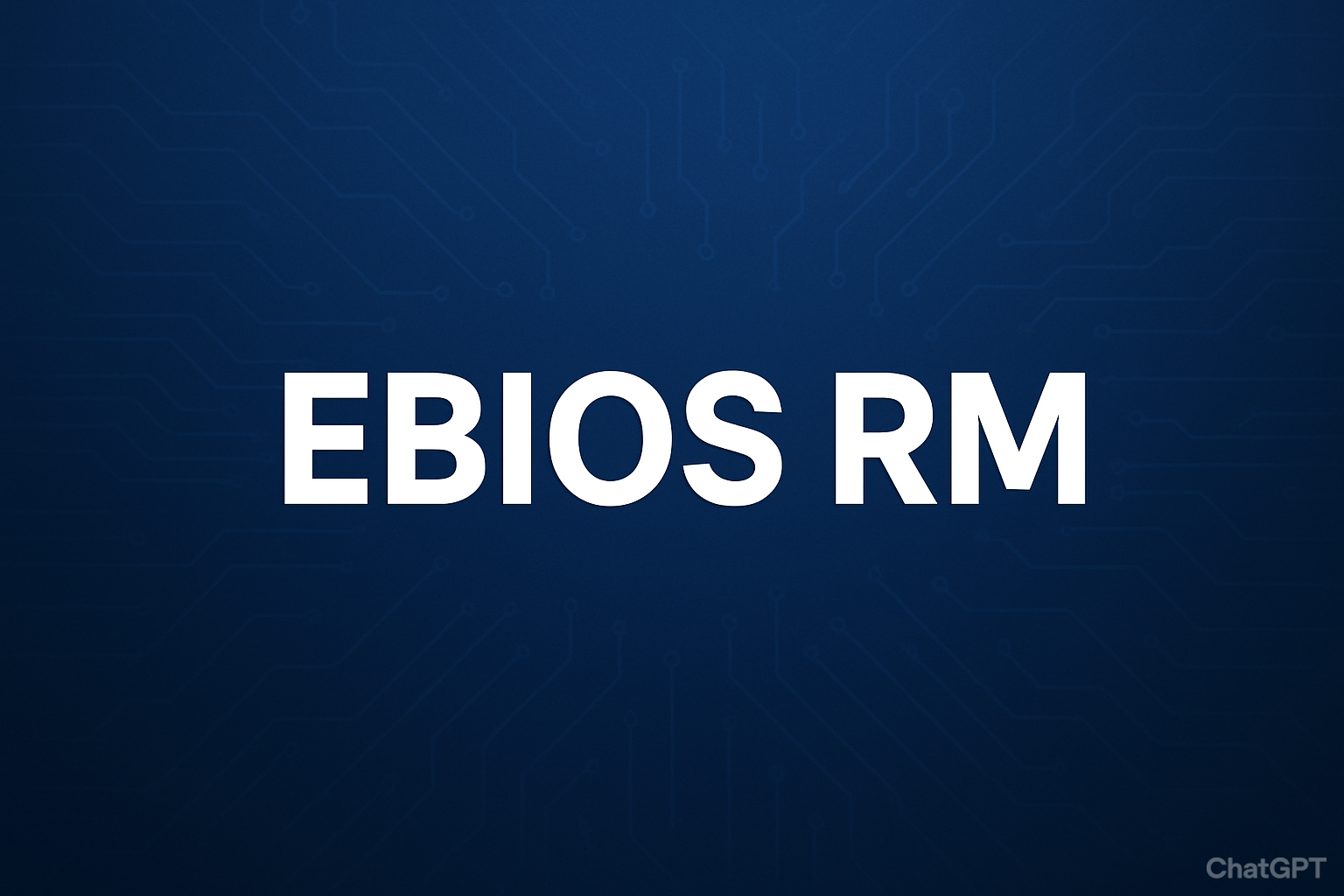With the explosion of cyberattacks and tightening regulations, cybersecurity risk management has become a major strategic challenge for all businesses. How can you effectively identify, assess, and treat threats to your information system? How can you meet ISO 27001, NIS2, or GDPR compliance requirements while optimizing your security investments?
EBIOS Risk Manager has established itself as the French reference in cyber risk analysis. This method, developed by ANSSI (French National Cybersecurity Agency), provides a structured and recognized framework for building a robust IT security policy adapted to current challenges.
In this article, we explain everything you need to know about EBIOS Risk Manager: its principles, advantages, implementation, and impact on your cybersecurity governance.
What is EBIOS Risk Manager ?
A French Reference Method
EBIOS Risk Manager is a cybersecurity risk analysis and management method developed by the French National Agency for Information Systems Security (ANSSI). It represents the evolution of the EBIOS 2010 method, enhanced to address current cybersecurity challenges.
This French approach is based on a comprehensive vision of risks, integrating technical, organizational, and human aspects. It enables companies of all sizes to structure their cyber risk management approach according to a recognized and proven framework.
Fundamental Principles
EBIOS Risk Manager is based on five complementary workshops that form a complete cybersecurity maturity assessment process:
- Scoping and security baseline: defining the study scope and basic security measures
- Risk sources: identifying threats and their motivations
- Strategic scenarios: analyzing possible attack paths
- Operational scenarios: detailed study of operational methods
- Risk treatment: defining the cybersecurity action plan
This structured methodology guarantees an exhaustive and coherent approach to risk management.
EBIOS Risk Manager and the Security Ecosystem
Complementarity with Other Frameworks
EBIOS Risk Manager harmoniously integrates with major IT governance standards and best practices:
- ISO 27001/27002: alignment with security domains and protection measures
- NIST Cybersecurity Framework: correspondence with Identify, Protect, Detect, Respond, Recover functions
- COBIT: integration into IT governance and management processes
This complementarity facilitates method adoption in organizations already engaged in certification processes.
Integration with MSSP Services
Managed Security Service Providers (MSSPs) increasingly integrate EBIOS Risk Manager into their audit and governance offerings. This evolution allows companies to benefit from external expertise while maintaining control of their security strategy.
MSSP audit and governance services typically include:
- Facilitating EBIOS Risk Manager workshops
- Producing regulatory deliverables
- Monitoring cybersecurity action plans
- Periodic updates of risk analysis
Case Study : Practical Example
A financial services company with 500 employees implemented EBIOS Risk Manager following new NIS2 requirements. The approach identified 23 risk scenarios, prioritized 15 security measures, and reduced residual risk levels by 40% in 18 months.
The initial investment of €50,000 (including external support) generated estimated savings of €200,000 over three years, particularly through better allocation of security resources.

The Future of EBIOS Risk Manager
Recent and Future Developments
ANSSI regularly evolves the method to adapt to new threats and regulations. Recent developments include:
- Enhanced consideration of supply chain threats
- Integration of cloud and mobility challenges
- Adaptation to NIS2 and Cyber Resilience Act requirements
Future versions should further integrate artificial intelligence and automation into analysis processes.
Process Digitalization
New software tools facilitate EBIOS Risk Manager implementation:
- Collaborative platforms for workshop facilitation
- Automatically updated threat databases
- Automated report and dashboard generation
- Integration with vulnerability management tools
This digitalization reduces workload and improves analysis quality.
Conclusion : EBIOS Risk Manager, a Strategic Investment
In a context where cyber threats intensify and regulations tighten, EBIOS Risk Manager offers companies a proven methodological framework for managing their cybersecurity risks. This French method, recognized by ANSSI and acclaimed by professionals, represents a real performance lever for your organization.
Beyond simple regulatory compliance, EBIOS Risk Manager transforms risk management into a competitive advantage. It enables optimization of security investments, strengthens stakeholder confidence, and secures the company’s digital transformation.
Implementing EBIOS Risk Manager represents a strategic investment whose benefits are measured in both short and long term: operational risk reduction, improved IT governance, assured regulatory compliance, and optimized security costs.
Take Action 🎯
Do you want to implement EBIOS Risk Manager in your organization or deepen your cybersecurity risk management approach? Our expert team supports you through all stages: from initial cybersecurity audit to complete implementation of your security governance.
Contact us today for a personalized assessment of your needs and discover how EBIOS Risk Manager can transform your cybersecurity approach. Together, let’s build a protection strategy adapted to your challenges and industry sector.


